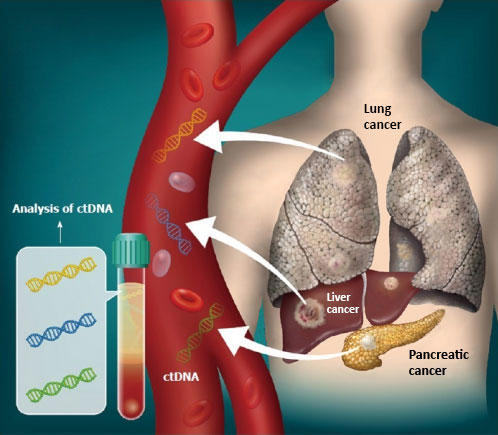Over 500 million people worldwide suffer from diabetes—a disease that contributes to major complications such as stroke, kidney failure, cancer, and Alzheimer's disease. At the heart of this condition lies the dysfunction of pancreatic islets, the mini-organs called organoids responsible for regulating blood sugar, in both autoimmune type 1 diabetes and stress-induced type 2 diabetes. Replacing these damaged islets with lab-grown, functional islets represents a promising therapeutic strategy. However, the lack of reliable markers to identify truly functional, stem cell–derived islets has hindered the consistent production needed for clinical application.
In a study published in Nature Communications , Dr. Eiji Yoshihara, PhD , investigator at The Lundquist Institute for Biomedical Innovation at Harbor-UCLA Medical Center and an assistant professor at the David Geffen School of Medicine at UCLA, and his team reported the discovery of a key marker, FXYD2, that identifies both the functional maturity and heterogeneity of stem cell–derived islet organoids. This breakthrough enables researchers to distinguish between "good" and "bad" quality islets, providing a much-needed tool for quality control in the production of transplantable islets. The current study represents a key next step shifting from generation to functional selection and advances the field toward safer and more effective islet replacement therapies.
This work builds on Dr. Yoshihara's previous study published in Nature , in which his team developed a concept and a method to generate functional immune-evasive human islet-like organoids from human pluripotent stem cells (hPSCs). While this earlier work paved the way for a potential cure for diabetes, batch-to-batch variability and the unpredictable quality of the generated islets have hindered clinical application.
A key challenge was how to evaluate the functional quality of stem cell-derived islets beyond simply measuring insulin expression. Dr.Yoshihara's team addressed the issue of immature and heterogeneous functionality of hPSC-derived islets, a problem reported globally. By integrating more than 200,000 single cell RNA-seq data, the team identified a common set of dysregulated genes in hPSC-derived insulin producing cell, including those in the mineral absorption pathway regulated by the FXYD2 gene.
Through biochemical and molecular biology approach, they discovered that FXYD2 not only serves as a marker of functional heterogeneity but also plays an active role in regulating key genes essential for β cell identity and maturation. Notably, FXYD2 localizes to the cell membrane and forms a signaling complex that enhances downstream signaling, acting as a "kinase signal extender." This finding suggests a novel mode of mammalian signal transduction by which a membrane protein remotely modulates nuclear gene expression.
Next, the team investigated whether FXYD2 could be used to distinguish therapeutically effective islets from ineffective ones. Notably, functional assays of individual organoids revealed a strong positive correlation between insulin secretion and FXYD2 expression. This allowed the researchers to classify insulin-expressing organoids into FXYD2-high and FXYD2-low groups, effectively separating functional islets from non-functional ones within heterogeneous stem cell–derived populations. Furthermore, only the FXYD2-high insulin-positive organoids were capable of reversing hyperglycemia in severe diabetic models, while FXYD2-low counterparts showed no therapeutic effect.
"Although quality control is one of the most critical aspects of practical cell therapy, functional selection for stem cell–derived islet organoids—beyond insulin expression was challenging. Our study addresses this challenge by resolving the heterogeneity of human stem cell–derived islet organoids and introducing a functional marker to isolate transplant-ready islets," said Dr. Yoshihara.
Clarissa Tacto, who is first author of the study and research assistant in Dr.Yoshihara's Lab, said, "While insulin expression is the hallmark of stem cell derived islets, cells that co-expressed insulin and FXYD2 had higher therapeutic efficacy in glucose regulation than those that expressed insulin alone."
By enabling the precise selection of functional islets, this work lays the foundation for a more predictable and promising future in regenerative diabetes therapy.
Other contributing authors, include Meghan Tahbaz, Andrew Salib, Shudi Wang, Fritz Cayabyab, Jinhyuk Choi, Kiyoka Kim, Yu Hamba, Harvey Perez, of Lundquist Institute, Paul D. Gershon of University of California Irvine, Robert Damoiseaux of University of California Los Angeles and Tae Gyu Oh of the University of Oklahoma.
This work was supported by the National Institutes of Health (1R01DK136888), Breakthrough T1D (former JDRF, 5-CDA-2022-1178-A-N) and Allen Foundation, Inc.
PUBLICATION INFORMATION
JOURNAL: Nature Communications
TITLE: FXYD2 marks and regulates maturity of β cells via ion channel-mediated signal transduction.
AUTHORS: Clarissa Tacto, Meghan Tahbaz, Andrew Salib, Shudi Wang, Fritz Cayabyab, Jinhyuk Choi, Kiyoka Kim, Yu Hamba, Harvey Perez, Paul D. Gershon, Robert Damoiseaux, Tae Gyu Oh, Eiji Yoshihara
About The Lundquist Institute for Biomedical Innovation at Harbor-UCLA Medical Center
The Lundquist Institute for Biomedical Innovation at Harbor-UCLA Medical Center (TLI) is a world-leading nonprofit biomedical research institute in Los Angeles County. Affiliated with the David Geffen School of Medicine at UCLA and the Harbor-UCLA Medical Center, TLI has an international reputation for advancing clinical and translational research, training physician scientists, and delivering valued community service programs.






